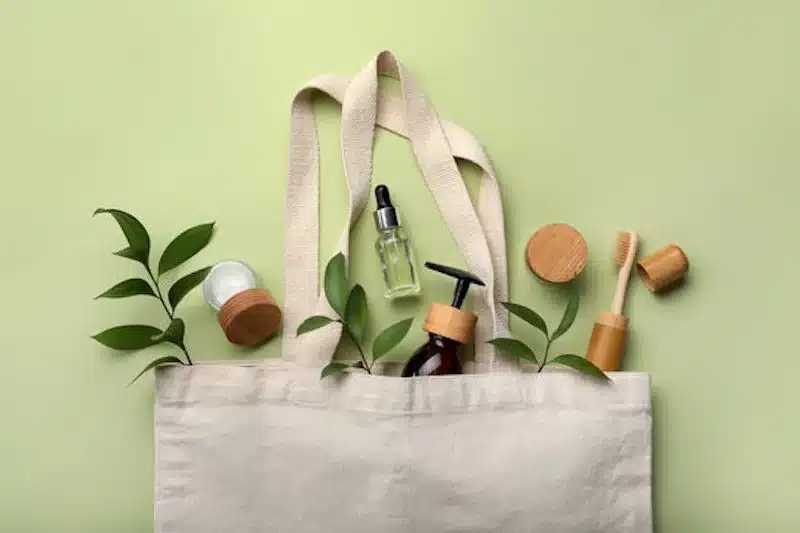Sustainable beauty isn’t just a buzzword in 2025—it’s changing how we choose formulas, packaging, and our everyday routines. Today’s beauty leaders and conscious consumers demand more than “natural” claims—they want planet-first practices, mindful sourcing, and products that do good for both skin and the world. Dive into the top trends, understand why they matter, and get actionable steps for transforming your routine with real impact.

Why Sustainable Beauty Trends Matters in 2025–2026
Sustainability is non-negotiable for the modern beauty lover. As climate concerns and resource limitations intensify, over 30% of consumers now choose brands that align with their ethics. That means companies are shifting toward transparent ingredient lists, lifecycle thinking, and socially responsible supply chains. Today’s top buyers want proof—scientific backing, certifications, and carbon transparency are the new gold standard.
Beyond environmental responsibility, there’s an emotional connection growing: routines rooted in ancestral practices, nature, and culture create deeper, more meaningful beauty experiences. AI-powered personalization and the rise of K-beauty also help tailor routines to individual needs, making sustainability personal and powerful.
Eco-Conscious Packaging: Small Swaps, Big Impact
Beauty packaging is getting a major eco-makeover. In 2025, brands are focusing on glass, aluminum, and biodegradable designs, dramatically reducing landfill waste and overproduction. The move toward refillable pods and minimalist design isn’t just trendy—it’s transforming shopping habits and making recycling simpler for everyone.
Quick Tips:
- Choose glass serums and aluminum deodorants to avoid plastic contamination.
- Look for recycled ocean plastics and mono-material packs for easier disposal.
- Give imperfect packaging a chance—what matters is inside, not the label.
Trend: Refill & Reuse Systems
Refillable beauty products are a game changer for waste reduction and long-term savings. From in-store top-up stations to clever refill pods, this approach cuts down single-use packaging and encourages mindful consumption. Switch your most-used items—cleanser, shampoo, deodorant—to refill formats first for fast results.
How to Upgrade:
- Track your empties and prioritize high-frequency items for refills.
- Ask brands about take-back programs or refillable options to support closed-loop systems.
Trend: Waterless & Solid Formats
Waterless products—think concentrated serums, shampoo bars, and powder cleansers—conserve resources and shrink packaging. This means lighter shipments, longer shelf life, and a much smaller environmental footprint.
Eco Routine Enhancers:
- Try solid cleansers, sticks, or dissolvable powders for maximum effect.
- Pair with biodegradable or reusable cloths and pads to cut landfill waste.
Trend: Upcycled Ingredients
Upcycling—transforming food and agricultural by-products into active skincare ingredients—is growing fast. Coffee grounds, fruit peels, and nut oils bring novel textures and high efficacy to formulas, while rescuing resources that would go to waste.
Check Labels For:
- “Upcycled” or “by-product” actives in ingredient lists.
- Brands that explain their upcycling process and environmental impact.
Trend: Clean, Vegan & Cruelty-Free Formulations
The demand for plant-based, cruelty-free products is higher than ever, but sustainability is multi-faceted. Look for brands that combine vegan or clean formulas with ethical sourcing, carbon neutrality, and green packaging. Certifications such as ECOCERT, Leaping Bunny, or Fair Trade signal higher standards.
Transparency Matters:
- Third-party verified “no list” ingredients.
- Clear sourcing stories and transparent supply chains.
Skin Minimalism: Multi-Use and Fewer Steps
Skin minimalism is the antidote to cluttered routines. Multi-taskers—SPF moisturizers, lip-cheek tints, all-in-one balms—deliver efficiency, save time, and slash waste. Minimalism means focusing on fewer, high-performance products that respect your skin and the planet.
Smart Swaps:
- Replace three products with one high-quality multi-use formula.
- Reduce routine steps for less packaging, easier recycling, and lower carbon footprint.
Carbon Transparency & Circularity
Brands are publishing full lifecycle analyses and launching recycling or take-back programs. Carbon-neutral shipping, recycled packaging, and designs for easy disassembly are mainstream, showing measurable climate action.
Actionable Steps:
- Choose brands that publish their carbon data or partner with circular initiatives.
- Join take-back programs and properly sort recyclable materials.
Local & Ethical Sourcing
Support brands using region-specific botanicals and fair-trade ingredients—this reduces transport emissions and empowers communities. Certifications and “local first” claims signal a commitment to ethical practices.
Checklist:
- Look for “locally sourced” or “ethically traded” on packaging.
- Verify certifications from USDA Organic, Fair Trade, or similar bodies.
How To Switch Your Routine Step-by-Step
- Audit Fast-Empty Products: Learn how to assess your top empties and make swaps with ecochicglam’s product audit guides.
- Swap For Refillable or Waterless: Quick start advice lives in the Refillable Beauty and Zero-Waste resources.
- Recycle Right & Rebuy Smart: Rinse, separate, and check ingredient certifications using tips in the Green Packaging and Sustainable Beauty Certifications categories.
Editor’s Picks & Resources
Sustainable Beauty Trends Practices: Explore research-backed explainers and actionable guides.- Top Eco-Friendly Beauty Brands: Discover vetted sustainable options with strong credentials.
- External References: Meyers, CAS Insights, and Allied Market Research provide the scientific backbone for these strategies.
Common Questions
Which sustainable beauty trends make the biggest impact fastest?
Switching to refillable packaging and waterless formats reduces waste immediately and usually saves money.
Do clean or vegan labels automatically mean sustainable?
No—true sustainability involves sourcing, packaging, and circular systems alongside clean/vegan claims.
How do I know my routine is sustainable?
Audit ingredient sources, packaging types, and brand certifications. Minimal steps, refill formats, and ethical labels show you’re on the right track.
Conclusion
Sustainable Beauty Trends in 2025–2026 is about more than ingredients—it’s a holistic approach to daily routines, a new standard for brand responsibility, and a deeper connection to ourselves and our planet. By embracing eco-friendly packaging, refillable formats, waterless products, and ethical sourcing, every routine becomes a powerful tool for change. Start small, iterate often, and be proud of every green step forward.
Ready to transform your beauty routine? Try one swap this week, share your progress, and inspire others to care for their skin and the planet—one ethical decision at a time.
